Kanchanaburi Thailand: 10 Reasons Why Every Visit To Thailand Should Include Kanchanaburi
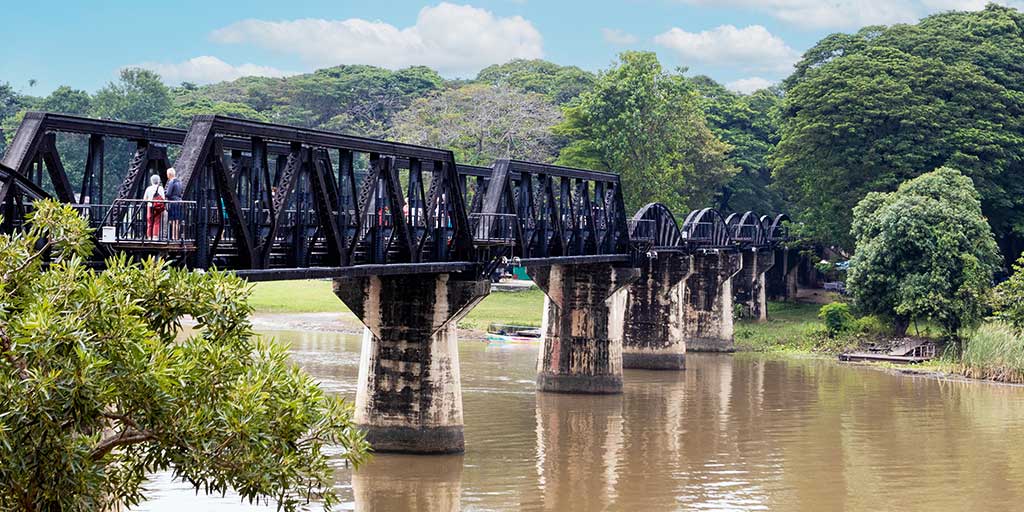
With mesmerizing history and some of the most beautiful national parks, these incredible things to do in Kanchanaburi Thailand make it a traveler’s dream.
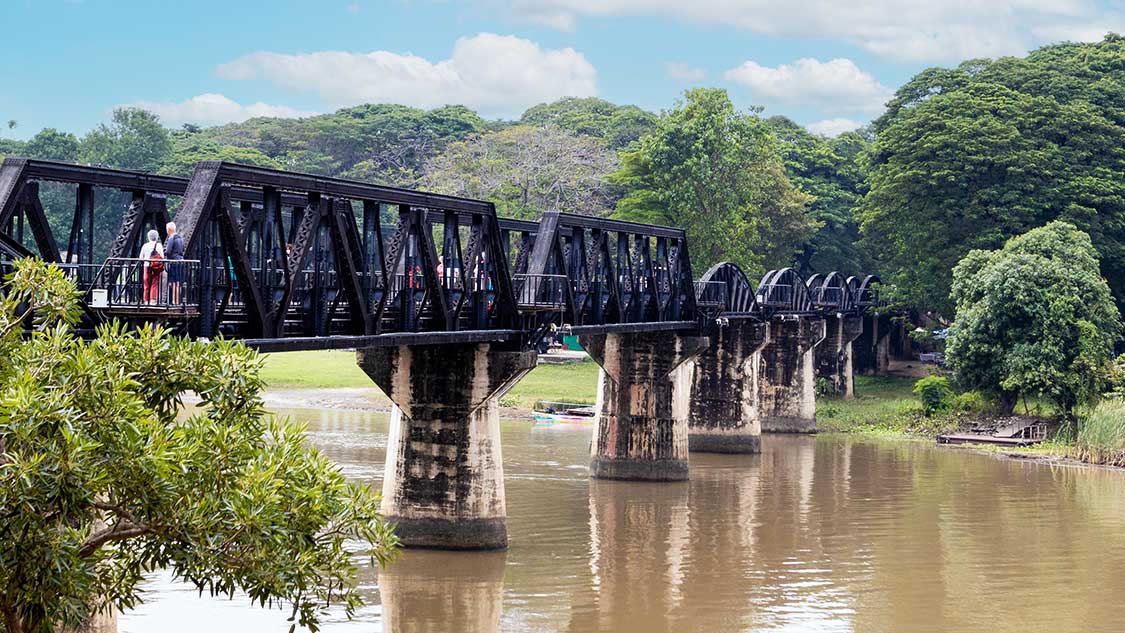
Situated just 80 miles from the city of Bangkok, the Kanchanaburi region is an often overlooked destination for travelers in Thailand.
But as tourism in Thailand continues to grow, more and more visitors are taking the time to explore this under-the-radar destination and discovering that incredible vistas, lush nature, and incredible history are just a drop in the bucket when it comes to the best things to do in Kanchanaburi.
Kanchanaburi covers a large region of central Thailand, and its history is steeped in military strategies and horrors. It rose to prominence in the late 18th century when King Rama I set the city as a defensive outpost to protect against attacks from the neighboring Burmese. This remained its primary function until the early 1900s when the threat of attack was reduced.
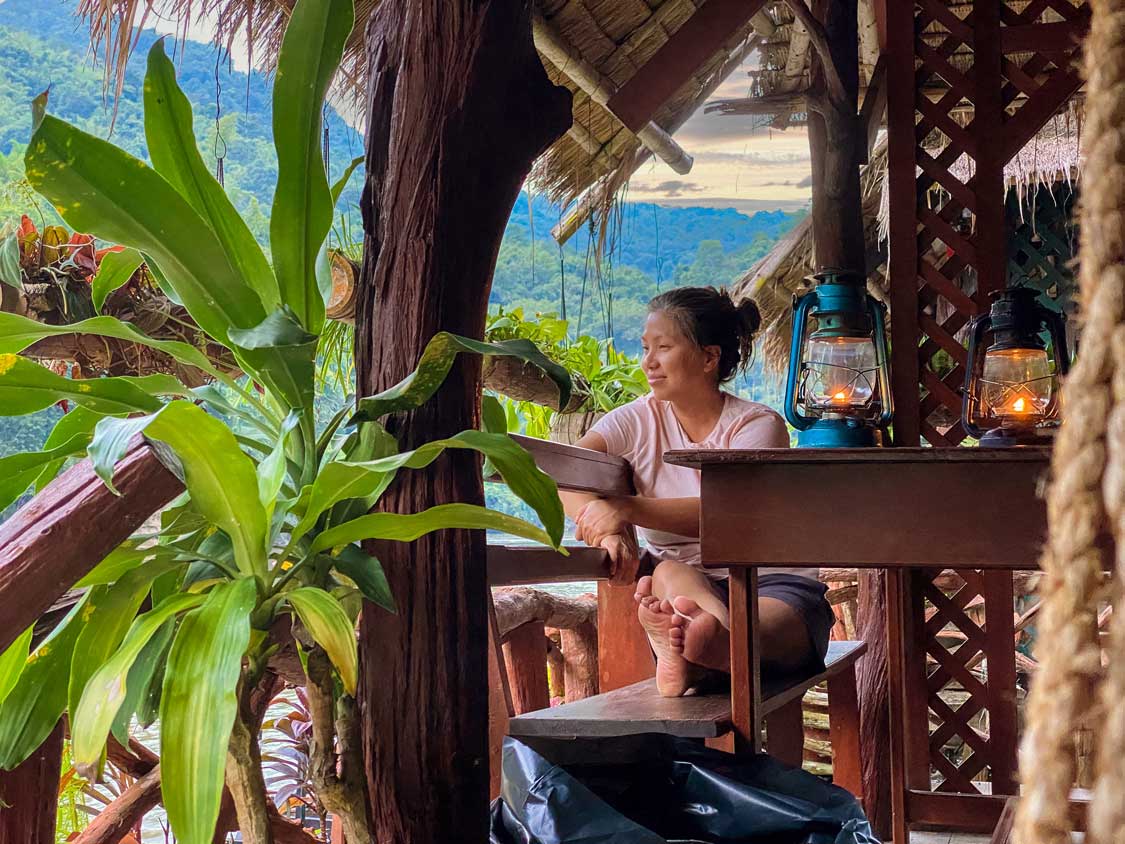 Christina relaxing on our Kwai River Lodge
Christina relaxing on our Kwai River Lodge
This all changed during the second world war when the Japanese invaded Thailand and set about creating a railway to move goods from, then, Burma to the shores of the Gulf of Thailand. The Burma Railway, as it was named by the Japanese, was built almost entirely by prisoners of war and slaves captured from China and Southeast Asia.
Over the course of three years, more than 180,000 civilians and over 12,000 POWs were subjected to inhumane working conditions, malnutrition, and disease as they were forced to construct the railway. Of those forced into labor around 90,000 civilians died, as did more than 12,000 Allied prisoners. This led to the railway being dubbed the “Death Railway.“
Kanchanaburi has since rebounded from the disasters of WWII and is now one of the fastest-growing destinations for tourism in Thailand. It was one of my family’s favorite places to visit in Thailand, and you’ll soon understand why.
The Best Things To Do In Kanchanaburi, ThailandKanchanaburi isn’t lacking in attractions. Although this city might not be as famous as places such as Bangkok, Phuket, or Chiang Mai, Kanchanaburi offers a wealth of experiences in a much more relaxed package than its more popular siblings.
Walk Over the Bridge on the River Kwai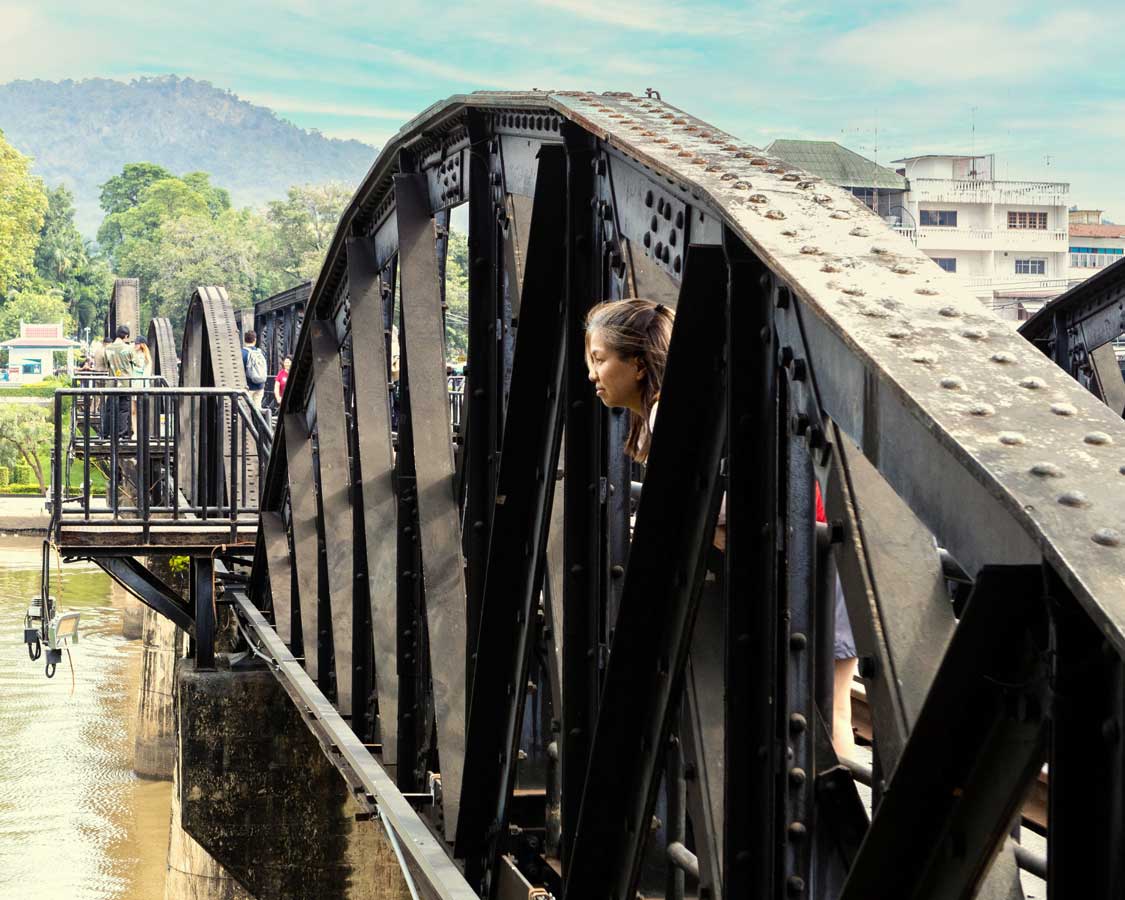 Looking out from the Bridge on the River Kwai
Looking out from the Bridge on the River Kwai
Among the most famous of all of the places to visit in Kanchanaburi is the Bridge on the River Kwai, otherwise known as the Death Railway Bridge.
The Bridge on the River Kwai is the biggest symbol of the tragedy of the Burma railway, but you’d never know that by simply visiting. The Thai people have a tremendous ability to look on the bright side of every situation. Rather than a memorial, the atmosphere around the Death Railway Bridge is downright festive.
The bridge was built between 1942 and 1943 as the only steel bridge the Japanese commissioned during the war. And it was infamously bombed again and again by allied troops attempting to disrupt the movement of goods between Burma and Japan.
The bridge was relatively innocuous until the release of the Hollywood blockbuster ‘Bridge on the River Kwai’ starring William Holden and Sir Alec Guinness. The popularity of the film introduced a new passion to the story that inspired it, and today the bridge acts as a reminder of the history and horrors of war.
Each day hundreds of visitor walk, hop, or cycle over the bridge. You can even hop on the train from the nearby station and ride it all the way to Bangkok.
Visit the Kanchanaburi War Cemetery D pays tribute to Alexander Dean at the Kanchanaburi War Cemetery
D pays tribute to Alexander Dean at the Kanchanaburi War Cemetery
To say that the Kanchanaburi War Cemetery hit us hard is a bit of an understatement. My wife and I were visiting Thailand with kids, our two boys excitedly hopped out of the car when we arrived and were quickly reading the plaques about some of the soldiers who risked everything to help their fellow POWs or to send messages to the Allied forces back home.
They made a connection with the story of Chaplain Alexander Dean, a soldier who was captured in 1941. He ended up passing away just a year later. They made it a mission to track down his headstone amidst the rows upon rows of memorials so that they could pay tribute to his sacrifice.
Across the street from the cemetery is the Thailand-Burma Railway Centre, also known as the Death Railroad Museum. The museum has some truly striking exhibits outlying the life and sacrifices of the soldiers and civilians who worked on the railroad. The museum is definitely worth a visit. It has a small cafe, and coffee or tea is included in the entrance fee.
This tour includes a visit to the war cemetery, the Jeath war museum, and a longtail boat ride to the River Kwai Bridge.
Discover Hellfire Pass Memorial Museum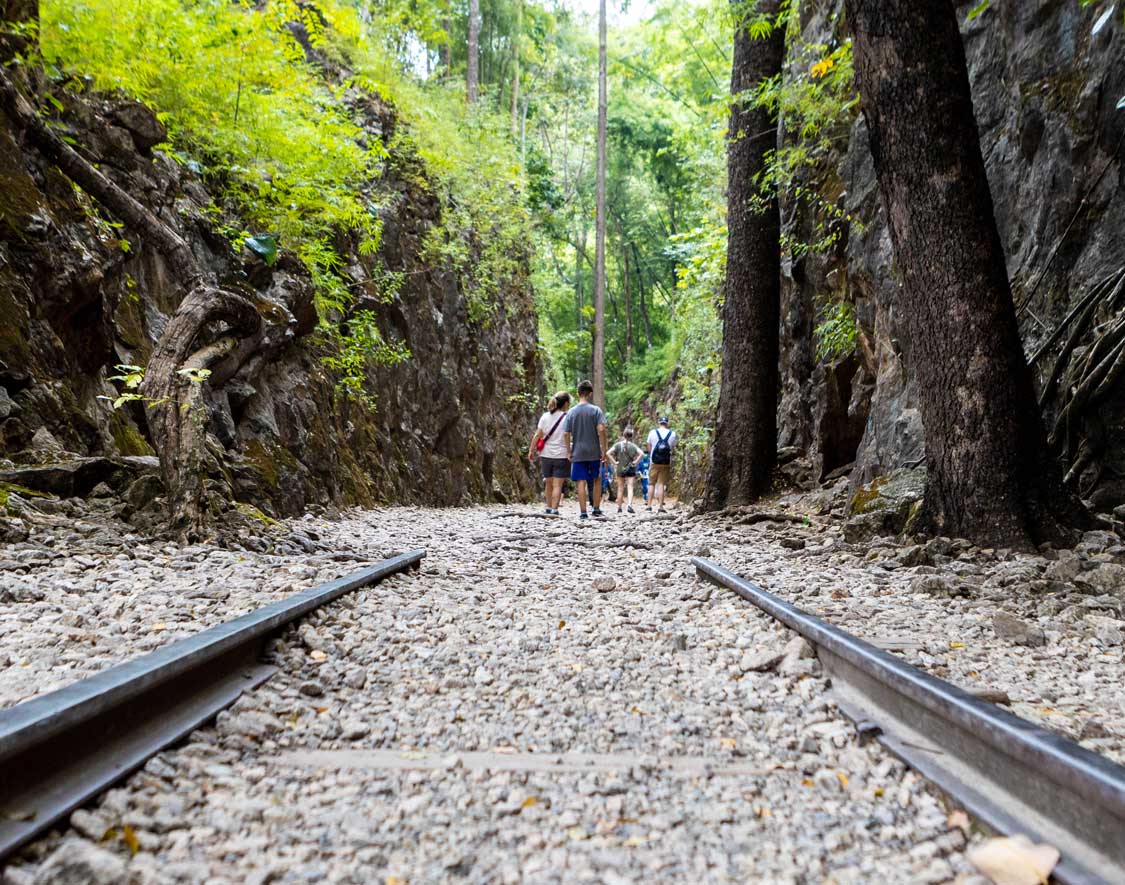 Remnants of the rail line in Hellfire Pass
Remnants of the rail line in Hellfire Pass
Hellfire Pass Memorial Museum and Interpretive Center is one of the best experiences in Kanchanaburi focused on the Death Railway. The museum and the associated trails is built at the location where the most deaths occurred while the railroad was under construction.
The museum includes testimonials from POWs who lived through the atrocities of the Thai-Burma Railroad construction and represents the countries that lost the most soldiers including the British, Dutch, and Australians.
The museum, which was built by the Australian government, sits at the top of the canyon where Hellfire Pass was built, visitors can walk miles of the former railway and see the incredible landscape through which it was built.
Apart from being incredibly historic and educational, Hellfire Pass is incredibly beautiful as well. It’s incredibly humbling and peaceful to walk through this storied pass. I recommend getting the audio guide from the museum. This allows you to hear the stories of Hellfire pass as you walk through it.
This tour includes both the River Kwai Bridge and Hellfire Pass as well as a ride on the Death Railway.
Ride the Death Railway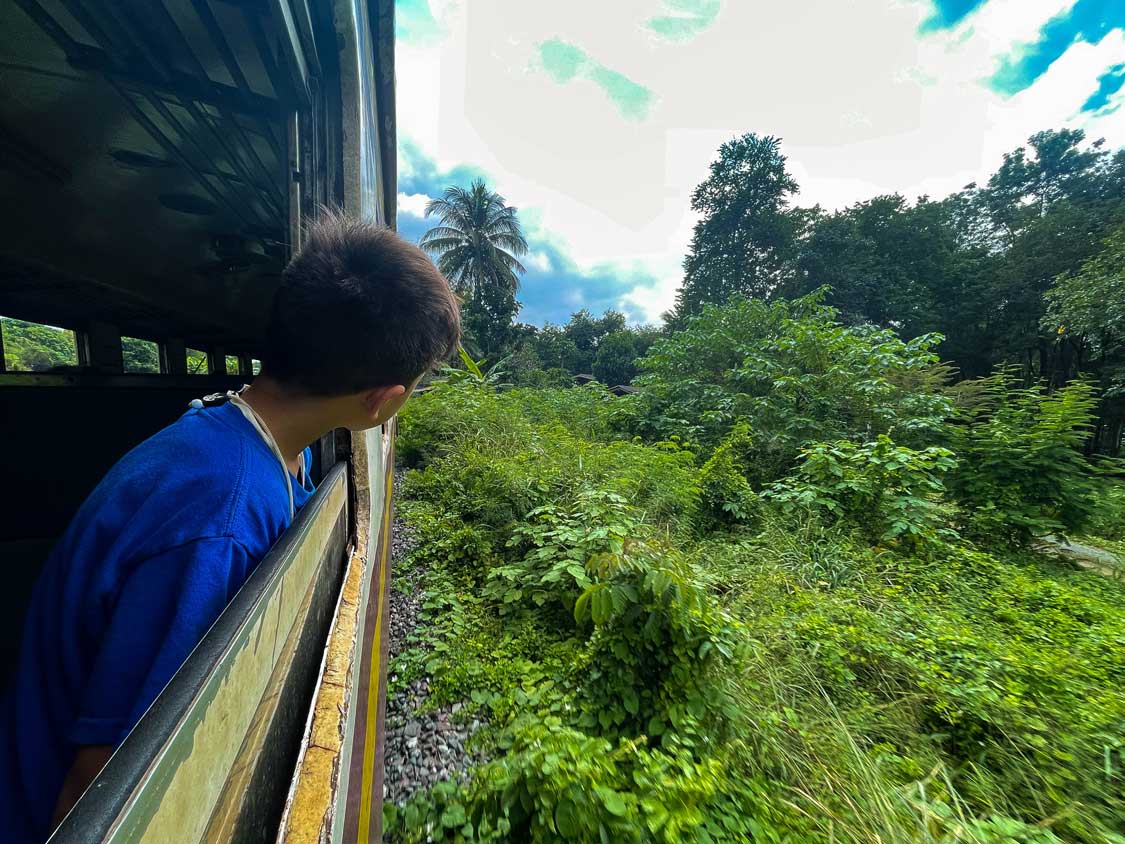 D admires the view from the Thai-Burma Railway
D admires the view from the Thai-Burma Railway
With all of the incredible Death Railway attractions in Kanchanaburi, Thailand, it would be a shame to visit and not take a ride on the Thai-Burma Railroad itself.
The 260-mile train route originally connected the city of Ban Pong in Thailand with the city of Thanbyuzayat in Myanmar(Burma). In 1947, the railroad was shut down, but sections of it reopened just ten years later.
Today, visitors and locals alike board the Death Railway to experience the majestic views of the route between the cities of Nam Tok and Kanchanaburi. The scenic, slow Kanchanaburi train ride glides through scenic farmland and along the edge of towering cliffs. Some of the most stunning stops include a bridge over the Khwae Yai River and tiny villages where travelers lean out the open windows to catch the perfect photograph.
The train picks up passengers along the way, so open seats can change. If you want the best views, I recommend getting a seat on the left side of the train. But there are a few places where the right side has some gorgeous scenery too.
A ride on the Death Railroad is one of the best things to do in Kanchanaburi. You can purchase your tickets at the Nam Tok or Kanchanaburi train station or you can book a Death Railway tour ahead of time that includes many of the other sites that I mention.
Sleep In A Floating Lodge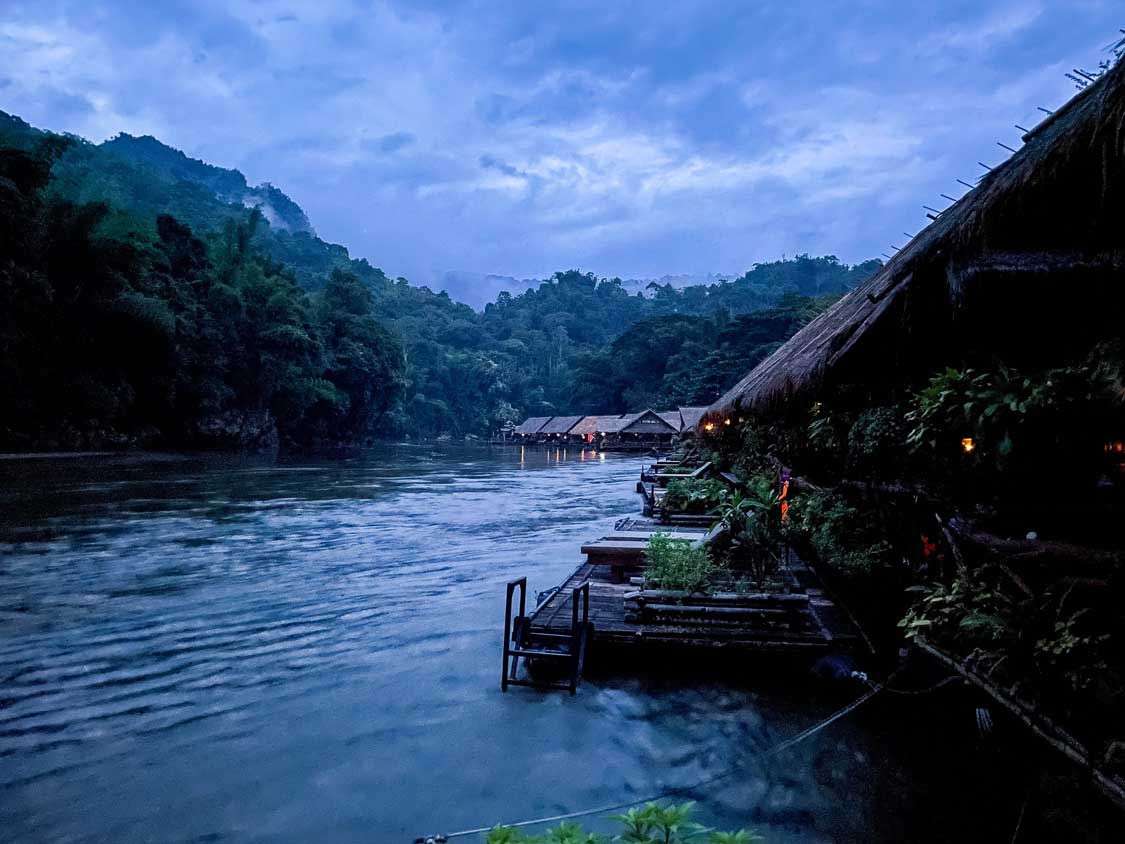 Sunrise over Kwai River Jungle Rafts in Kanchanaburi
Sunrise over Kwai River Jungle Rafts in Kanchanaburi
Our absolutely favorite thing to do in Kanchanaburi was our time at the Kwai River Jungle Rafts floating lodge in Sai Yok National Park.
There are several floating lodges along the Khwae Noi River, and they’re all pretty fantastic. We opted to stay at Kwai River Jungle Rafts, a gorgeous lodge just a short distance from Phutakein Pier. These amazing lodges are right on the water amidst the flowing currents.
Each room features a back deck looking out onto a Mon hill tribe village while the front connects all of the rooms and includes a lounging deck where our boys spent hours jumping into the fast-moving water and floating down to the lines of ladders in front of each room.
The floating lodges make for a great place to take day trips within Sai Yok National Park including visits to Lawa Cave and Sai Yok Waterfall.
There is Mons village right behind the lodge where most of the staff live. Visits include a tour of the village, its Buddhist Temple, and a traditional Mons dance show. During our visit, we were lucky enough to be guided by the village school teacher who showed us how he is trying to keep the traditional Mons language alive among villagers and Mons people who have moved away to Thailand’s larger cities.
One thing concern I had with River Kwai Jungle Rafts was that the Mon Village still houses an elephant in their traditional practices. The elephant is no longer used for labor and is treated well by the villagers, although it is still ridden by its mahout. Thailand is in a unique transition time as it attempts to decommission and rehome former working elephants, and some villages, especially smaller, self-contained ones such as this, have yet to adjust completely.
Tham Krasae (Krasae Cave)In the town of Lum Sum, which is one of the stops on the Death Railway, there is one of the coolest places to visit in Kanchanaburi.
Tham Krasae is a massive limestone cave that draws hundreds of visitors thanks to the towering golden Buddha temple that adorns the inside. Those riding the train might have a few short moments to check it out, but a lengthy stop in Lum Sum isn’t guaranteed.
This isn’t the best Buddha temple in the region, but its unique position inside the cave makes it a pretty cool experience.
Sai Yok National Park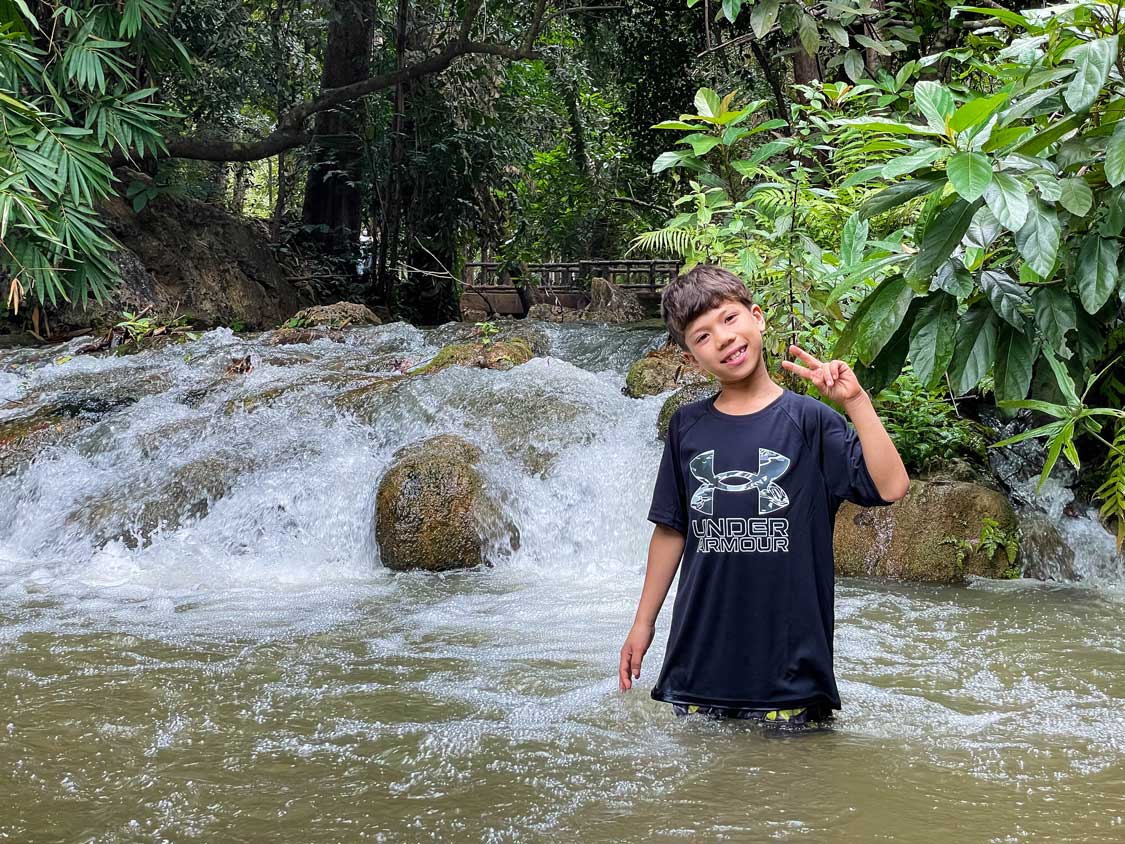
* This article was originally published here
Comments
Post a Comment